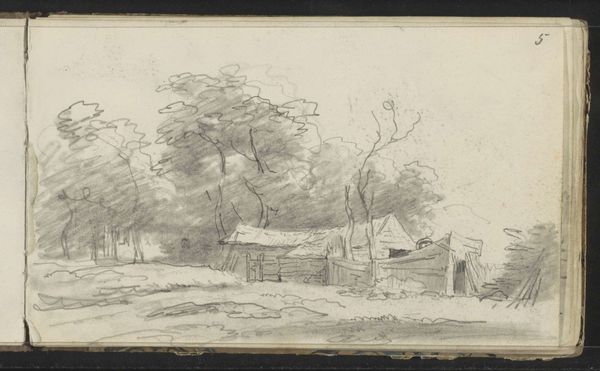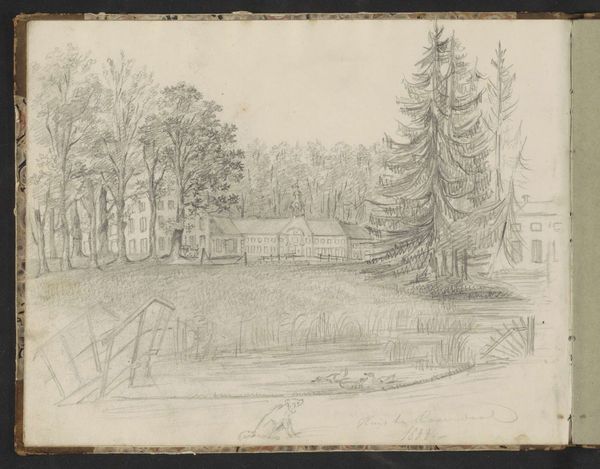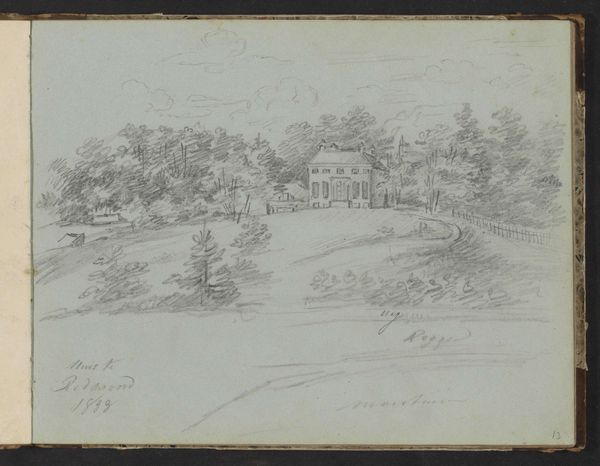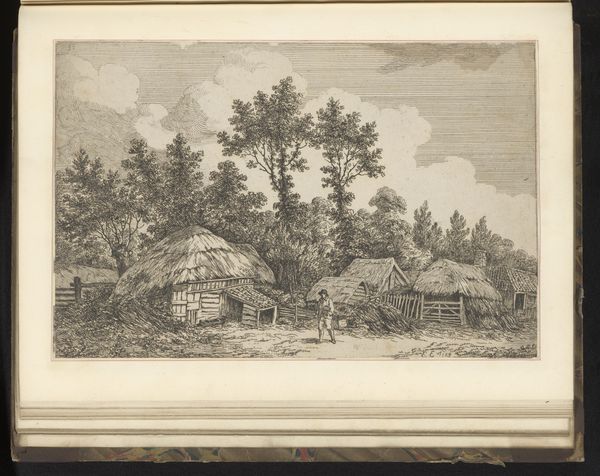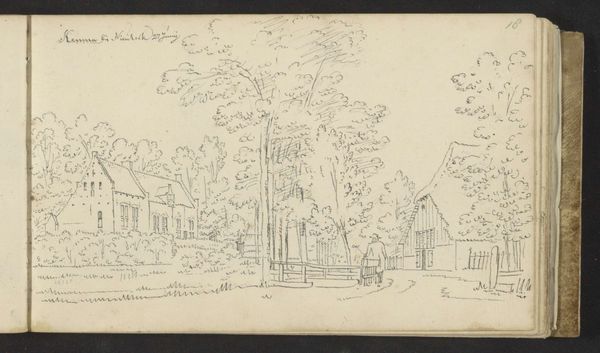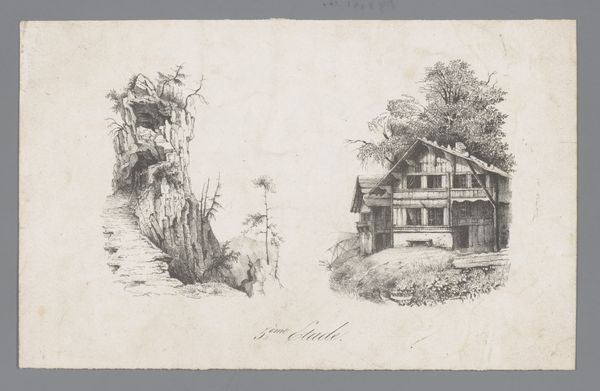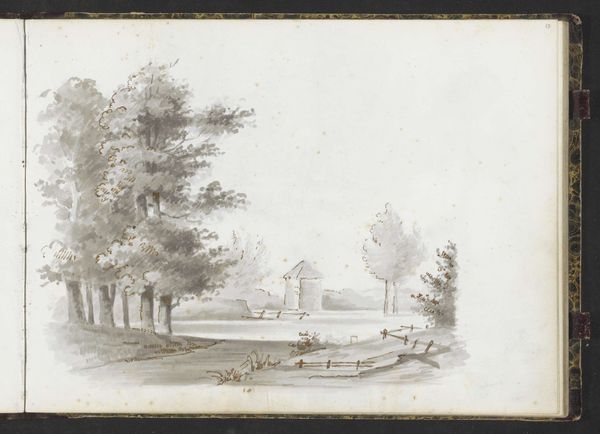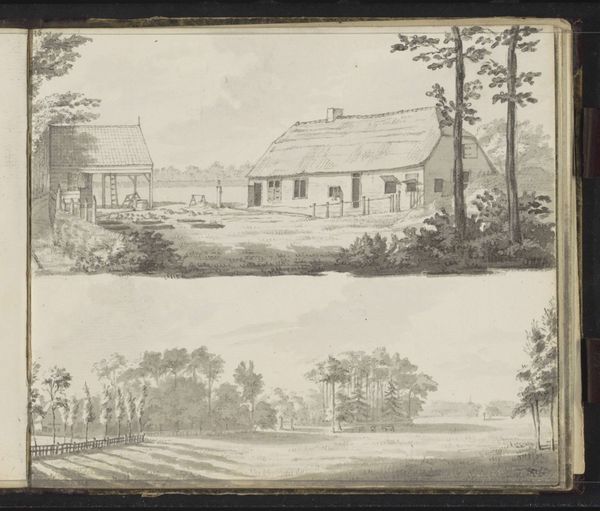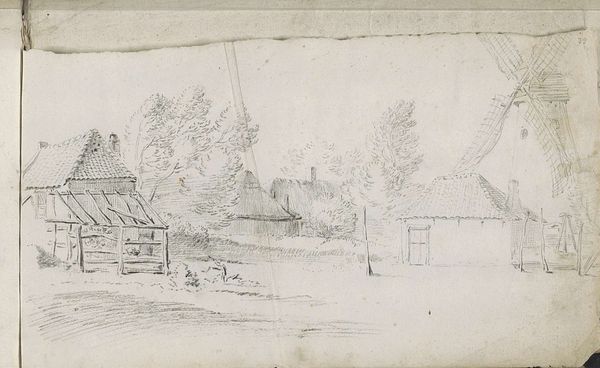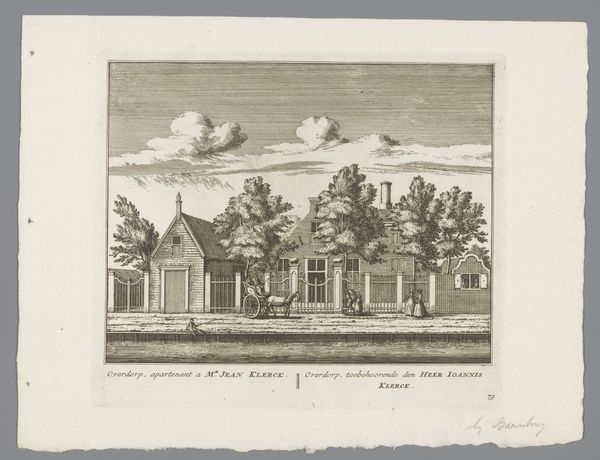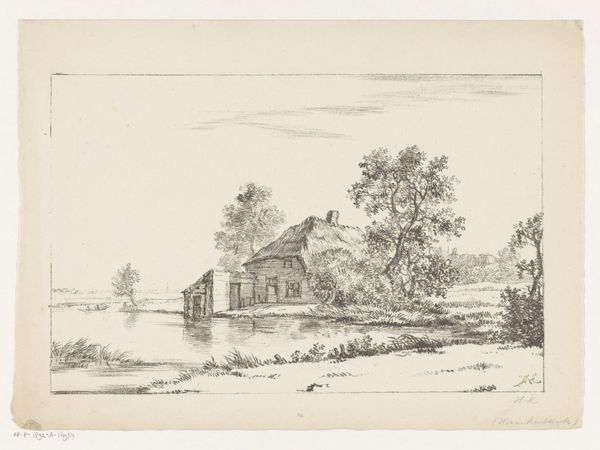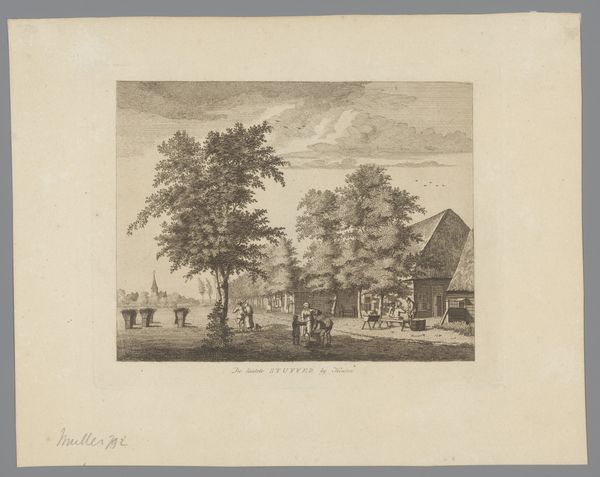
drawing, pencil
#
drawing
#
aged paper
#
toned paper
#
sketch book
#
landscape
#
personal sketchbook
#
romanticism
#
pen-ink sketch
#
pencil
#
pen work
#
sketchbook drawing
#
watercolour illustration
#
sketchbook art
#
watercolor
Copyright: Rijks Museum: Open Domain
Editor: This delicate sketch, "Tuinkoepel en een landschap met naaldbomen" by Hendrik Abraham Klinkhamer, likely from between 1820 and 1872, depicts a garden pavilion and landscape in watercolor, pencil, and pen-ink on toned paper. It reminds me of sketchbook pages; there’s a certain immediacy to it. How do you interpret this work? Curator: What interests me here are the materials and their deployment. This wasn’t a grand commission, but an act of personal creation, made of readily available and relatively inexpensive material. Notice the 'toned paper'; this suggests an intention, a choice to work with what might have been considered imperfect or ‘used’ material, perhaps challenging the traditional separation between polished art and functional scrap. Editor: That's a fascinating point. I hadn’t considered the significance of the materials themselves. It feels very immediate – an artist quickly sketching his surroundings, not worried about perfection. Curator: Exactly! And think about the 'landscape' genre. Was it a commercially viable pursuit? Or a way to reflect on Dutch culture? The choice of landscape combined with these modest materials implies something profound about the act of observation and record-keeping itself, rather than the creation of some kind of 'masterwork' destined for sale or display. What about that pavilion? Editor: That's true. So, it becomes more about the artist's process and his environment. And now, that pavilion, partially hidden by a tree… Is it to emphasize the man-made is constantly surrounded by nature? Curator: Perhaps. It draws our eye towards what it took to create an artistic space within nature, as opposed to merely documenting a sublime scene, isn’t it? What does it say that it looks fairly easy to reproduce? Editor: It is intriguing to think about art making beyond a grand gesture, and more connected to the immediate, material realities of an artist's life. I’ve learned a lot from seeing art this way! Curator: Indeed. The artwork reminds us to examine not only the final product but the tangible traces of creation itself, challenging us to appreciate the value in both the maker and the materials.
Comments
No comments
Be the first to comment and join the conversation on the ultimate creative platform.
